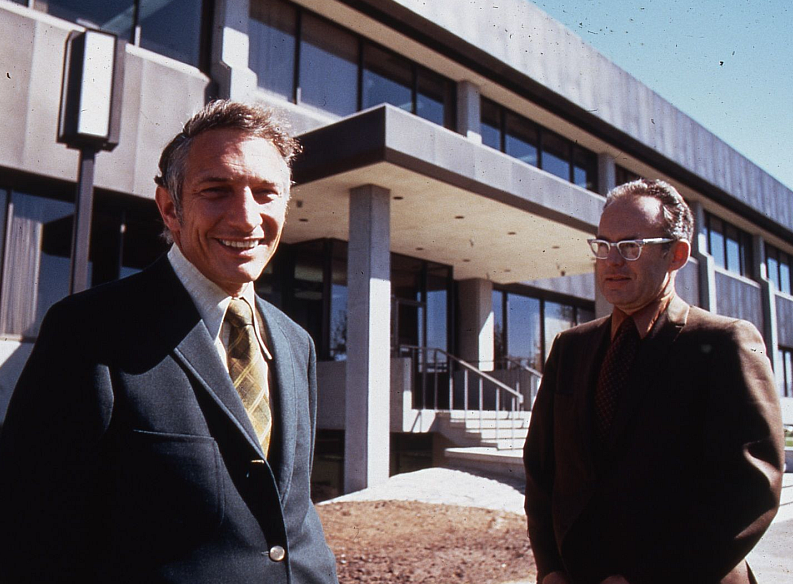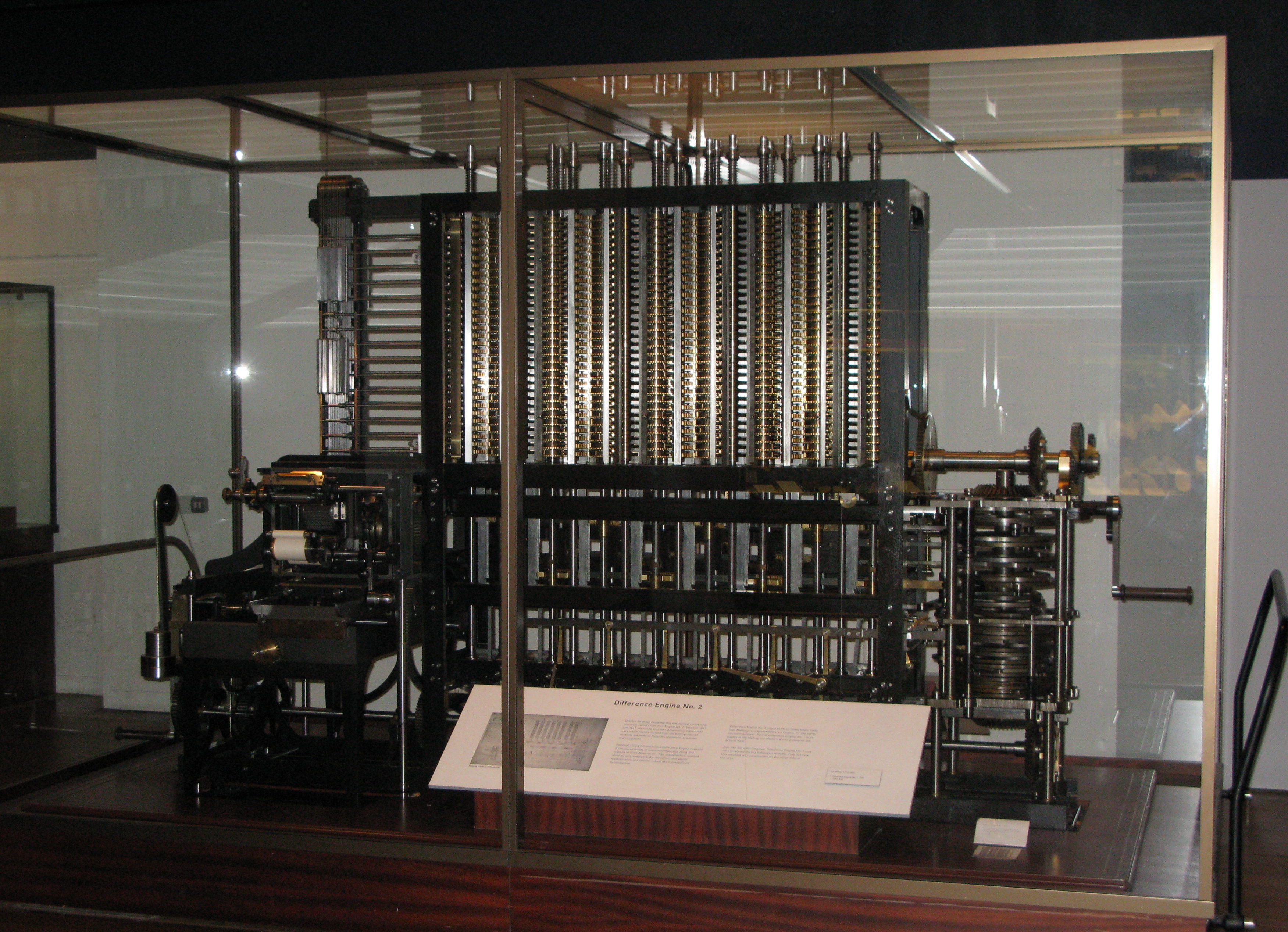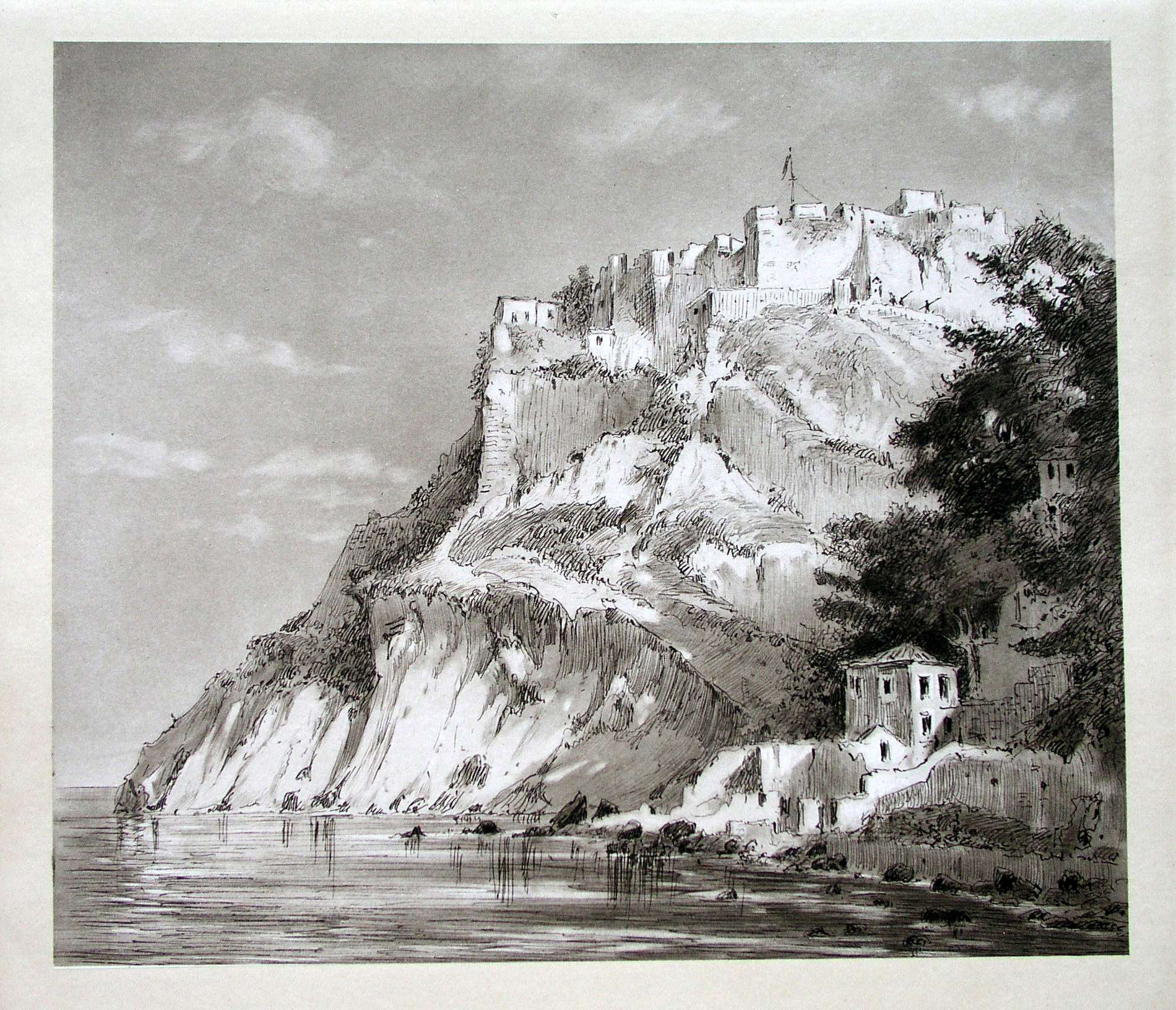|
Tyranny Of Numbers
The tyranny of numbers was a problem faced in the 1960s by computer engineers. Engineers were unable to increase the performance of their designs due to the huge number of components involved. In theory, every component needed to be wired to every other component (or at least many other components) and were typically strung and soldered by hand. In order to improve performance, more components would be needed, and it seemed that future designs would consist almost entirely of wiring. History The first known recorded use of the term in this context was made by the Vice President of Bell Labs in an article celebrating the 10th anniversary of the invention of the transistor, for the "Proceedings of the IRE" (Institute of Radio Engineers), June 195 Referring to the problems many designers were having, he wrote: At the time, computers were typically built up from a series of "modules", each module containing the electronics needed to perform a single function. A complex circuit l ... [...More Info...] [...Related Items...] OR: [Wikipedia] [Google] [Baidu] |
Computer Engineering
Computer engineering (CE, CoE, or CpE) is a branch of engineering specialized in developing computer hardware and software. It integrates several fields of electrical engineering, electronics engineering and computer science. Computer engineering is referred to as ''electrical and computer engineering'' or '' computer science and engineering'' at some universities. Computer engineers require training in hardware-software integration, software design, and software engineering. It can encompass areas such as electromagnetism, artificial intelligence (AI), robotics, computer networks, computer architecture and operating systems. Computer engineers are involved in many hardware and software aspects of computing, from the design of individual microcontrollers, microprocessors, personal computers, and supercomputers, to circuit design. This field of engineering not only focuses on how computer systems themselves work, but also on how to integrate them into the larger pictur ... [...More Info...] [...Related Items...] OR: [Wikipedia] [Google] [Baidu] |
Robert Noyce
Robert Norton Noyce (December 12, 1927 – June 3, 1990), nicknamed "the Mayor of Silicon Valley", was an American physicist and entrepreneur who co-founded Fairchild Semiconductor in 1957 and Intel Corporation in 1968. He was also credited with the realization of the first monolithic integrated circuit or microchip made with silicon, which fueled the personal computer revolution and gave Silicon Valley its name.While Kilby's invention was six months earlier, neither man rejected the title of co-inventor.Lécuyer, p. 129 Noyce founded The Noyce School of Applied Computing within the College of Engineering at Cal Poly, San Luis Obispo. In 1987, President Ronald Reagan awarded him the National Medal of Technology, and in 1989, he was inducted into the U.S. Business Hall of Fame, with President George H. W. Bush delivering the keynote. In 1990, he received a Lifetime Achievement Medal alongside Jack Kilby and John Bardeen during the bicentennial celebration of the Patent ... [...More Info...] [...Related Items...] OR: [Wikipedia] [Google] [Baidu] |
Early Computers
Early may refer to: Places in the United States * Early, Iowa, a city * Early, Texas, a city * Early Branch, a stream in Missouri * Early County, Georgia * Fort Early, Georgia, an early 19th century fort Music * Early B, stage name of Jamaican dancehall and reggae deejay Earlando Arrington Neil (1957–1994) * Early James, stage name of American singer-songwriter Fredrick Mullis Jr. (born 1993) * ''Early'' (Scritti Politti album), 2005 * ''Early'' (A Certain Ratio album), 2002 * Early Records, a record label Other uses * Early (name), a list of people and fictional characters with the given name or surname * Early effect, an effect in transistor physics * Early, a synonym for ''hotter'' in stellar classification In astronomy, stellar classification is the classification of stars based on their stellar spectrum, spectral characteristics. Electromagnetic radiation from the star is analyzed by splitting it with a Prism (optics), prism or diffraction gratin ... See also * * ... [...More Info...] [...Related Items...] OR: [Wikipedia] [Google] [Baidu] |
Computer Engineering
Computer engineering (CE, CoE, or CpE) is a branch of engineering specialized in developing computer hardware and software. It integrates several fields of electrical engineering, electronics engineering and computer science. Computer engineering is referred to as ''electrical and computer engineering'' or '' computer science and engineering'' at some universities. Computer engineers require training in hardware-software integration, software design, and software engineering. It can encompass areas such as electromagnetism, artificial intelligence (AI), robotics, computer networks, computer architecture and operating systems. Computer engineers are involved in many hardware and software aspects of computing, from the design of individual microcontrollers, microprocessors, personal computers, and supercomputers, to circuit design. This field of engineering not only focuses on how computer systems themselves work, but also on how to integrate them into the larger pictur ... [...More Info...] [...Related Items...] OR: [Wikipedia] [Google] [Baidu] |
Control Data
Control Data Corporation (CDC) was a mainframe and supercomputer company that in the 1960s was one of the nine major U.S. computer A computer is a machine that can be Computer programming, programmed to automatically Execution (computing), carry out sequences of arithmetic or logical operations (''computation''). Modern digital electronic computers can perform generic set ... companies, which group included IBM, the Burroughs Corporation, and the Digital Equipment Corporation (DEC), the NCR Corporation (NCR), General Electric, Honeywell, RCA, and UNIVAC. For most of the 1960s, the strength of CDC was the work of the electrical engineer Seymour Cray who developed a series of fast computers, then considered the fastest computing machines in the world; in the 1970s, Cray left the Control Data Corporation and founded Cray Research (CRI) to design and make supercomputers. In 1988, after much financial loss, the Control Data Corporation began withdrawing from making computers and ... [...More Info...] [...Related Items...] OR: [Wikipedia] [Google] [Baidu] |
CDC 8600
The CDC 8600 was the last of Seymour Cray's supercomputer designs while he worked for Control Data Corporation. As the natural successor to the CDC 6600 and CDC 7600, the 8600 was intended to be about 10 times as fast as the 7600, already the fastest computer on the market. The design was essentially four 7600's, packed into a very small chassis so they could run at higher clock speeds. Development started in 1968, shortly after the release of the 7600, but the project soon started to bog down. The dense packaging of the system led to serious reliability problems and difficulty cooling the individual components. By 1971, CDC was having cash-flow problems and the design was still not coming together, prompting Cray to leave the company in 1972. The 8600 design effort was eventually canceled in 1974, and Control Data moved on to the CDC STAR-100 series instead. Cray revisited the 8600's basic design in his Cray-2 of the early 1980s. The introduction of integrated circuits solved the ... [...More Info...] [...Related Items...] OR: [Wikipedia] [Google] [Baidu] |
Seymour Cray
Seymour Roger Cray (September 28, 1925 – October 5, 1996) – was an American and architect who designed a series of computers that were the fastest in the world for decades, and founded Cray Research, which built many of these machines. Called "the father of supercomputing", Cray has been credited with creating the supercomputer industry. Joel S. Birnbaum [...More Info...] [...Related Items...] OR: [Wikipedia] [Google] [Baidu] |
Microprocessor
A microprocessor is a computer processor (computing), processor for which the data processing logic and control is included on a single integrated circuit (IC), or a small number of ICs. The microprocessor contains the arithmetic, logic, and control circuitry required to perform the functions of a computer's central processing unit (CPU). The IC is capable of interpreting and executing program instructions and performing arithmetic operations. The microprocessor is a multipurpose, Clock signal, clock-driven, Processor register, register-based, digital integrated circuit that accepts binary code, binary data as input, processes it according to instruction (computing), instructions stored in its computer memory, memory, and provides results (also in binary form) as output. Microprocessors contain both combinational logic and sequential logic, sequential digital logic, and operate on numbers and symbols represented in the binary number system. The integration of a whole CPU on ... [...More Info...] [...Related Items...] OR: [Wikipedia] [Google] [Baidu] |
History Of Computing Hardware
The history of computing hardware spans the developments from early devices used for simple calculations to today's complex computers, encompassing advancements in both analog and digital technology. The first aids to computation were purely mechanical devices which required the operator to set up the initial values of an elementary arithmetic operation, then manipulate the device to obtain the result. In later stages, computing devices began representing numbers in continuous forms, such as by distance along a scale, rotation of a shaft, or a specific voltage level. Numbers could also be represented in the form of digits, automatically manipulated by a mechanism. Although this approach generally required more complex mechanisms, it greatly increased the precision of results. The development of transistor technology, followed by the invention of integrated circuit chips, led to revolutionary breakthroughs. Transistor-based computers and, later, integrated circuit-based computers ... [...More Info...] [...Related Items...] OR: [Wikipedia] [Google] [Baidu] |
NASA
The National Aeronautics and Space Administration (NASA ) is an independent agencies of the United States government, independent agency of the federal government of the United States, US federal government responsible for the United States's civil list of government space agencies, space program, aeronautics research and outer space, space research. National Aeronautics and Space Act, Established in 1958, it succeeded the National Advisory Committee for Aeronautics (NACA) to give the American space development effort a distinct civilian orientation, emphasizing peaceful applications in space science. It has since led most of America's space exploration programs, including Project Mercury, Project Gemini, the 1968–1972 Apollo program missions, the Skylab space station, and the Space Shuttle. Currently, NASA supports the International Space Station (ISS) along with the Commercial Crew Program and oversees the development of the Orion (spacecraft), Orion spacecraft and the Sp ... [...More Info...] [...Related Items...] OR: [Wikipedia] [Google] [Baidu] |
Assembly Line
An assembly line, often called ''progressive assembly'', is a manufacturing process where the unfinished product moves in a direct line from workstation to workstation, with parts added in sequence until the final product is completed. By mechanically moving parts to workstations and transferring the unfinished product from one workstation to another, a finished product can be assembled faster and with less labor than having workers carry parts to a stationary product. Assembly lines are common methods of assembling complex items such as automobiles and other transportation equipment, household appliances and Consumer electronics, electronic goods. Workers in charge of the works of assembly line are called assemblers. Concepts Assembly lines are designed for the sequential organization of workers, tools or machines, and parts. The motion of workers is minimized to the extent possible. All parts or assemblies are handled either by conveyors or motorized vehicles such as forklif ... [...More Info...] [...Related Items...] OR: [Wikipedia] [Google] [Baidu] |
Photoetching
Photoengraving is a process that uses a light-sensitive photoresist applied to the surface to be engraved to create a mask that protects some areas during a subsequent operation which etches, dissolves, or otherwise removes some or all of the material from the unshielded areas of a substrate. Normally applied to metal, it can also be used on glass, plastic and other materials. A photoresist is selected which is resistant to the particular acid or other etching compound to be used. It may be a liquid applied by brushing, spraying, pouring or other means and then allowed to set, or it may come in sheet form and be applied by laminating. It is then exposed to light—usually strong ultraviolet (UV) light—through a photographic, mechanically printed, or manually created image or pattern on transparent film. Alternatively, a lens may be used to project an image directly onto it. Typically, the photoresist is hardened where it receives sufficient exposure to light, but some photores ... [...More Info...] [...Related Items...] OR: [Wikipedia] [Google] [Baidu] |







